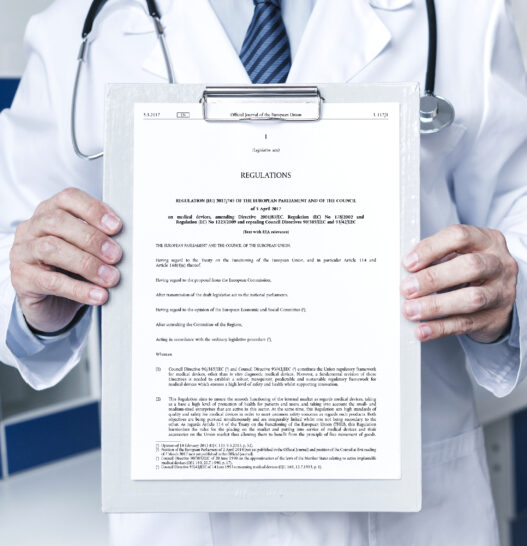What is the IVDR? When does it come into effect? Where exactly does the IVDR apply and what are the Usability requirements for your IVD? How do you ensure that these Usability requirements are met in accordance with the IVDR?
In this basic terms article you will find clear answers to these questions. We would like to give you a clear introduction to the topic. After reading it, you will know what the IVDR is and what it means for your IVD.
What is the IVDR?
The In Vitro Diagnostic Device Regulation is the EU directive that defines the essential safety and performance requirements for IVDs, i.e. In Vitro Diagnostic Devices. It specifies what an IVD has to achieve and how to demonstrate that this achievement is met. Accordingly, the IVDR applies to all countries of the EU.
The In Vitro Diagnostic Device Regulation not only deals with the requirements for the development process of the IVD, but also with market surveillance, use and import of the product.
The IVDR has replaced the IVDD since 2017. It was introduced together with the MDR on May 25, 2017. The transition periods you need to consider when converting an IVD already available on the market depend on the class of the product. We explain the different classes a little further in this article. The IVDD will become fully invalid on May 26, 2027.
Why is the IVDR so important for your product?
The In Vitro Diagnostic Device Regulation specifies the following for your product:
- Which risk class your product belongs to.
- What safety and performance requirements the products in each class must meet in order to get the clearance.
With regard to its contents, the IVDR also requires that all products must be demonstrably safe and efficient to use. For you, this means that you must do Usability Engineering, even though the word “Usability” is not explicitly mentioned in the IVDR.
What are the 4 classes for IVDs according to the IVDR?
The In Vitro Diagnostic Device Regulation now divides In Vitro Diagnostic Devices into four classes based on potential risk during use.
Class A: This class includes all products that pose only a minimal risk when used. A distinction is made between sterile and non-sterile products.
These can be spittoons or cups for urine samples.
Class B: Class B IVDs are used to collect measurements that are slightly critical. Misdiagnoses do not have life-threatening risks.
An example would be a blood glucose meter.
Class C: Critical measurement values fall into class C. A misdiagnosis of a class C product is associated with life-threatening risks.
This class includes therapy-accompanying diagnostics used in the treatment of cancer, but also CMV tests for pregnant women.
Class D: Products in this class provide highly critical measured values. For example, for the determination of very infectious and potentially fatal diseases. An HIV-Test would be the perfect example here.
The higher the class, the higher the IVDR requirements for your product. For non-sterile class A products, a conformity assessment including previous technical documentation is sufficient.
Which transition periods from IVDD to IVDR apply to you?
The transition period your IVD must meet when “moving” from IVDD to IVDR depends on the particular class of your product:
- Class A (non-sterile products): These must be brought up to IVDR standard from May 26, 2022.
- Class A (sterile products): Here you have until May 26, 2027 to convert.
- Class B: Here, too, the deadline is May 26, 2027.
- Class C: Products in this category must be brought up to IVDR standards by May 26, 2026.
- Class D: Here, the deadline is May 26, 2025.
How do you meet the Usability requirements of the IVDR for your product?
The basic safety and performance requirements for IVDs by the In vitro Diagnostic Device Regulation leave no doubt: In order to get the clearance for an IVD for the European market, you cannot avoid Usability Engineering. The advantage: Your product will then be verifiably safe and efficient to use by the previously defined potential users.
The Medical Device Coordination Group, MDCG for short, provides comprehensive guidance documents for individual product groups. These documents translate the requirements of the IVDR into clear instructions for product development. An example of how this can be implemented in practice, can be found in our article „Usability Testing for Corona Self-Tests“. An overview of the guidance documents can be found here.
If you want to know how to prepare the Usability Testing for your IVD we recommend our article “How to prepare your Usability Testing for IVDs“.
Conclusion
Since 2017, the IVDR regulates the essential safety and performance requirements for IVDs within the EU. Usability Engineering is not explicitly mentioned by the IVDR, but it must be done. The Usability of an IVD is an essential part that is needed to get the clearance for the European market.
What is your specific case? How does the IVDR affect your product? Feel free to comment on this post or get in touch via our contact form.



